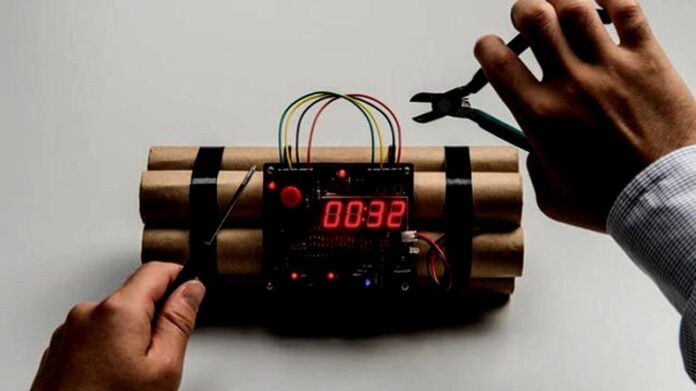
Ethereum's "difficulty bomb" exponentially increases mining difficulty and makes it unviable, what would happen if it was deactivated?
As The Merge event, which will merge the Ethereum mainnet with the Beacon Chain, making it go from being a Proof-of-Work network to a Proof-of-Stake network, approaches the end, a part of the community does not stop show their dissatisfaction with the change.
The merger, which, if all goes well, should take place in September, will render millions of mining rigs useless which will have to be shut down or, at best, migrate to other blockchains on which to continue working.
In this context, a group of Ethereum miners, called ETHPoW, has published a open letter in which he explains his firm conviction that force a hard fork that forks the Ethereum network, leaving one part with the current mining consensus system. To do so, the group claims that they have been able to deactivate Ethereum's "difficulty bomb", so they could continue mining, even after The Merge.
What is the Ethereum “difficulty bomb”?
First of all, it should be noted that Ethereum mining consists of solve computationally very complex mathematical algorithms, using a series of ASIC mining machines (a kind of graphics cards with a very high computing capacity). Once the algorithm is solved, ETH is released, which produces profits for the miners.
The difficulty of solving these algorithms increases as more computing power is added to the network, that is, as more miners work on it. So, at first it was very easy to solve Ethereum blocks and get a lot of ETH. However, today it is really difficult and requires a huge number of machines working at the same time to solve just one of these algorithms.
These increases in difficulty can be created artificially, by deploying so-called “difficulty bombs,” which cause an increase in mining difficulty.
With the arrival of The Merge and the change to Proof-of-Stake, Ethereum developers have planned to deploy a “difficulty bomb” that would exponentially increase mining difficulty, making it virtually impossible to mine a block, which will make it unfeasible to continue mining on the network.
The decision seeks to make the change to Proof-of-Stake complete, discouraging miners from continuing to work on Ethereum, thus preventing the occurrence of a hard fork that divides the network in two.
What if Ethereum’s “difficulty bomb” is deactivated?
Inevitably, Deactivating the “difficulty bomb” means that a hard fork and that the Ethereum network will fork into two; one Proof-of-Stake and another that will remain Proof-of-Work.
This is what the group of miners has explained, stating that "inevitably, there will be a fork after The Merge".
The group claims that there are many miners and exchanges working on Ethereum mining, who do not welcome this change. In their letter, the group states that “it will not be easy, but the biggest, strangest, and most extraordinary things in the world are always the most dangerous.”
Finally, they point out that They have already deactivated the difficulty bomb and are completing testnet preparation to initiate an Ethereum hard fork.
The case of Ethereum Classic
Ethereum Classic was born in 2016 after the DAO collapse will force developers to make the decision to fork the network into two: one in which the DAO hack remained, but in which the pioneers of Ethereum and their ideals continued to trust (“code is law” and the immutability of the blockchain) and a new chain, in which there was no hack.
While Ethereum has taken smart contracts and the possibility of offering a platform for DApps as its workhorse, Ethereum Classic (ETC) has focused on the developments on the IoT (Internet of Things).
[hubspot type=cta portal=20298209 id=38fb28e1-1dc1-40e3-9098-5704ca7fcb07]


